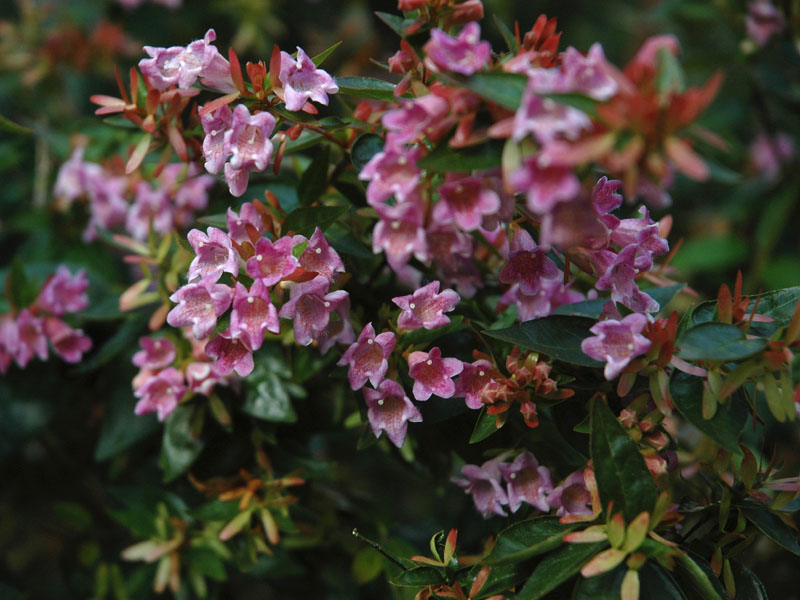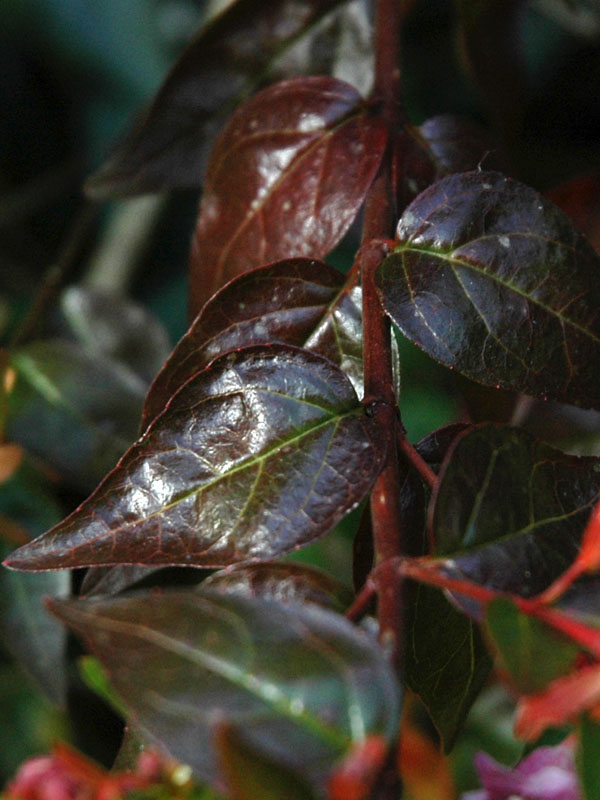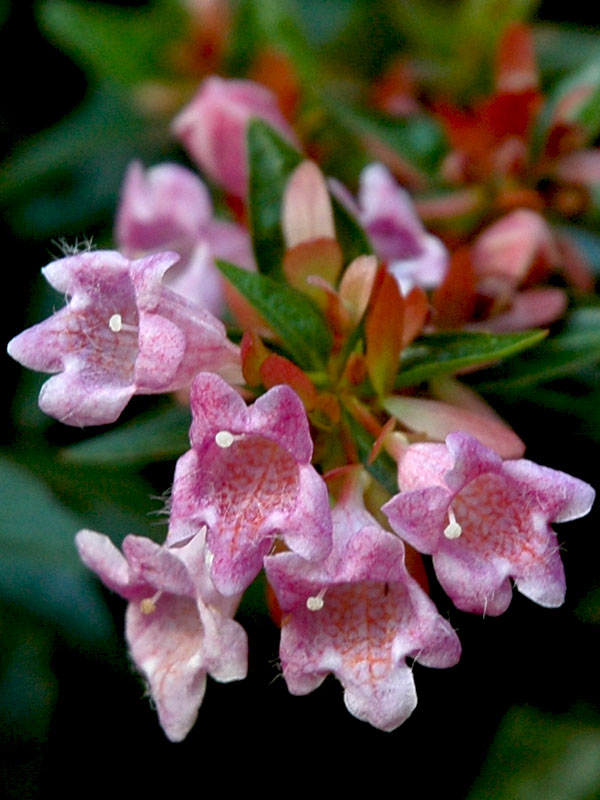
Woody > Abelia > Abelia schumannii > Abelia schumannii
Abelia schumannii
Schumann's Abelia
Origin: Native to China.The genus Abelia is named after Dr. Clarke Abel (1789-1862) a surgeon and naturalist who during 1816 - 17 accompanied a failed diplomatic mission to China but while there collected a small flowering shrub which was later named Abelia chinensis. On a return voyage back to England, Abel lost all of his specimens both due to pirates and a later shipwreck. It was not until 1844 that the plant would be introduced into cultivation through the efforts of Robert Fortune. Fortune working for the Horticultural Society of London, which was later to become the Royal Horticultural Society collected both A. chinensis and A. uniflora on the same expedition.
| Family |
| Caprifoliaceae |
| Genus |
| Abelia |
| Species |
| schumannii |
| Category |
| Woody |
| Type |
| Shrub (deciduous) |
| USDA Hardiness Zone |
| 7 - 10 |
| RHS Hardiness Zone |
| H5 |
| Height |
| 90 - 120 cm |
Photographs
Description and Growing Information
Flowering Period
| Cultivation |
| Soil should be well drained and although not choosy about soil pH, the shrub flourishes on alkaline soils. Plant in full sun but protected from strong winds. Prune annually to remove old branches and retain the arching form of the plant. |
| Shape |
| An open-arched shrub. |
| Growth |
| Medium |
| Habitat |
| Found growing abundantly on open scrubby or lightly wooded hillsides. |
| Flower Description |
| Pink flowers with gold markings in the hairy throats of the blooms and backed by darker coloured sepals. Scented blooms. |


